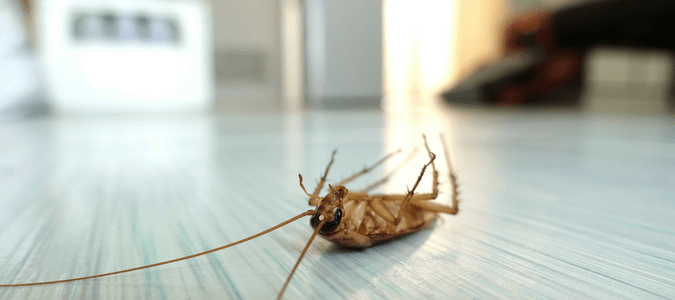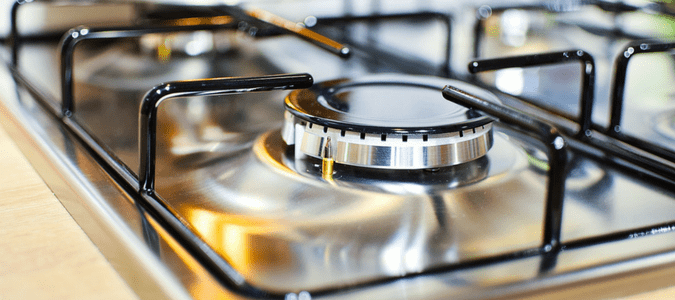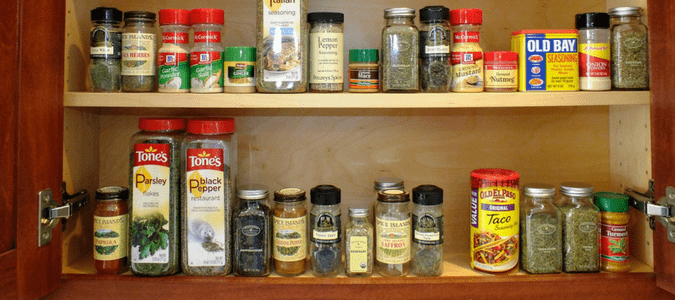
The vast majority of homeowners have come across a cockroach in their home. That’s because these critters are among the most common pests in homes, schools and businesses. There are around 3,500 species of cockroaches globally, but only 55 species are known to live in the United States. Fear not, though. If you are wondering how to get rid of cockroaches, you have a number of options. But before we dive into the details of how to remove these common pests, let’s go over a few characteristics that set this critter apart from the other creatures possibly inhabiting your home.
As you’ve probably noticed before, cockroaches have flattened bodies and heads that are concealed by a plate-like structure called a pronotum. Cockroaches have elongated, spiny legs that move incredibly fast—as we all know from attempting to squish one—and equally long antennae that help them find food and move around in the dark. Cockroaches can be brown, tan, reddish orange, pale green or tan, and most species of cockroaches have wings, though in some species, these are nonfunctional. While you’ve most likely encountered one or two during the day, the majority of cockroach species are nocturnal.
If you’re located in Texas, the four most common types of cockroaches in the state are the American cockroach, German cockroach, oriental cockroach, and the smokybrown cockroach. The German cockroach lives indoors, while the other three species live mainly outdoors, only moving inside in search of food or water.
Across species, cockroaches have a three-stage life cycle that includes egg, nymph and adult. What varies among species, however, is the number of eggs a female produces once she is matured; this number ranges from 12 to 36 eggs at a time. During the first stage of development, the egg stage, the female cockroach carries the egg capsule, or ootheca, until the eggs are mature or until she finds a secluded place to glue onto or drop them. Once the eggs hatch, nymphs seek out dark, protected spaces, like cracks and crevices in your home. The time it takes for a nymph to develop depends on the temperature of the space it’s in. German cockroaches, for example, develop in 50 to 60 days in temperatures around or close to 80 degrees Fahrenheit.
Now that we’ve gone over a few species of cockroaches you are likely to see and their life cycles, we can dive into the reasons why cockroaches enter your home and ways you can show them the way out.

How To Get Rid Of Cockroaches: Home Remedies First?
The first question you need to answer to determine how to handle a cockroach problem is: Where do roaches hide? You might be surprised to learn that roaches spend about 75% of the day resting. Since these pests can hide in all the cracks and crevices in your home, it’s no wonder that one roach can quickly turn into an infestation.
Although many homeowners turn to different home remedies to attempt to control roaches once they are in your home, the best approach is to take a step back and implement preventative measures to make your home less attractive and less accessible to these pests. Though food and water are two of the main reasons cockroaches enter your home, they can also be drawn to your home if it’s cluttered, as these critters are known to prosper in clutter, filth and grime. As such, one of the first things you’ll want to do to rid your home of cockroaches is to remove food, water and potential harborage locations. When you remove food or water, or if the amount is limited, cockroaches must travel farther distances to find it, making your home less appealing.
Cockroaches are especially drawn to grease, so cleaning the kitchen after meals or snacking is critical. Avoid leaving dirty dishes in the sink, ensure your stove top is clean and free of any residual cooking grease and take the time to sweep your floors for any food that’s fallen while preparing your meals. Furthermore, be sure to store food and leftovers in metal, glass or hard, plastic sealable containers cockroaches won’t be able to get into.
While the kitchen might seem like the more obvious place a cockroach would venture, there are other areas of the house where these creatures can provide the food and water they need to survive, especially if you have kids or young adults. That’s why you might consider limiting your family’s food consumption to one room of the house. Doing so will help eliminate possible food sources around your home that might get overlooked during your evening cleanup routine. Similarly, you’ll want to vacuum or sweep all other areas of your home frequently and be sure to keep garbage cans clean and covered tightly.
Though food and water can lure cockroaches into your home, they have to find a way to get inside before they can reach these tantalizing tidbits. As such, keep cockroaches out of your home is to seal up any cracks, holes and crevices you find around and inside your home. Be sure to check for cracks inside your pantry, between countertops and the wall, in cabinets, and along windows. Caulking up holes can block off a potential entryway for the cockroaches.
Like most other creatures, food and water are necessary for a cockroach’s survival. While you’ve done your best to keep a tidy home, like removing food sources from your kitchen, removing water sources can often go overlooked. Because cockroaches are attracted to moisture and water from leaks in pipes, you’ll want to ensure you repair any leaks around your home, no matter how small they are, and do all you can to avoid leaving standing water in your sink. Another moisture source you might not think about is your houseplants. Touch the surface of the soil and feel just below it to make sure it is moist but not overly wet. This will not only help deter pests, but also keep your plants healthier.
How To Get Rid Of Roaches Naturally
If you research natural pest control options, you are likely to run across many articles about using boric acid or Borax in your home. Although the use of these two materials for DIY pest control is quite common, there is an alternative that’s even safer, with no harmful side effects.
Homeowners looking for natural methods to make their home less hospitable to roaches can run a little water in sinks and tubs that aren’t frequently used. What this does is to keep your P traps from drying out. Your next likely question is: What is a P trap, anyways? A P trap is a U-shaped section of pipe that is underneath your sink which serves a few different purposes. First of all, this curve in your pipe prevents clogs from developing further down in a less accessible part of your plumbing. Second, this device acts as a seal, preventing odorous gases from escaping into your home through a tub or sink. Lastly, and most importantly if you are doing DIY pest control, a P trap creates a water barrier that prevents these creatures from crawling in through your pipes. If a guest bathroom sink or tub isn’t used frequently, the P trap can dry out, giving roaches the perfect entry point to invade your home.

How To Get Rid Of Cockroaches In Your Kitchen Cabinets
As we mentioned above, cockroaches are drawn to homes that provide ample food and water sources—and your kitchen is the ideal place for them to find those scraps of food and pockets of moisture. They also like to hide during the day, so making a home in your cabinets, where it’s dark and secluded, makes sense, as unappealing as it is to those of us who have come across a roach when opening a door to retrieve a needed item.
To make your kitchen cabinets less attractive to roaches, you’ll want to ensure there are no food particles or scraps hiding inside or perhaps just out of sight. Clean the dishes you store inside the cabinets properly, ensuring no grease or leftover food remains. The same can be said for pots and pans. Pans are often stored with food that seems to be baked on or grease that is difficult to remove. To avoid attracting cockroaches, though, you’ll want to spend extra time scrubbing and cleaning those kitchen appliances before storing them in the cabinet.
Finally, dusting and wiping your cabinets down regularly can help keep cockroaches away from these parts of your kitchen.

Why Do I Have Roaches In My Clean House?
Though having a clean home can decrease your chances of having a cockroach infestation, it doesn’t guarantee full protection either. Sometimes, despite your home’s cleanliness, cockroaches are drawn to your home for other reasons, too, many of which we’ve already mentioned above. In addition, roaches can survive for as long as a month without food, because they are cold-blooded. To make matters worse, most species are omnivores, meaning they have a broad diet that might include meat, soap, cheese, leather, dried skin, wallpaper, book bindings, paper and clothing made with nylon—all common items inside our homes.
Although roaches can go weeks without food, they can only go a week without water. In search of this moisture, cockroaches might head towards any leaky pipes you have around your home. They’re also drawn to the pipe’s dark corners and shelter they provide. That’s why you often find cockroaches under your bathroom and kitchen sinks. Similar to how pipes can provide a safe shelter for cockroaches to hide, so too can your kitchen cabinets.
Your backyard may also be a source of intrigue for these critters. While the inside of your home might be squeaky clean, your overgrown lawn or garden could be housing more roaches than you’d like to know. Roaches can be drawn to your lawn for the same reasons they’re drawn to the inside of your home: food, water and shelter. So if your lawn contains open trash bins, standing water in bird baths or compost and wood piles, you may be offering exactly the home they’re looking for, which increases the likelihood that they might find a way inside your home.
ABC Can Help With Even The Peskiest Pests
While there are plenty of at-home remedies you can utilize to keep roaches away, we understand the headache, or simple disgust, a roach infestation can cause. Luckily, the technicians at ABC Home & Commercial Services are knowledgeable and ready to help you tackle the problem, no matter the size. Our team of experts can pinpoint the enticing factors luring cockroaches to your home. We’ll set up an at-home inspection and work with you to best tackle the problem for good.

